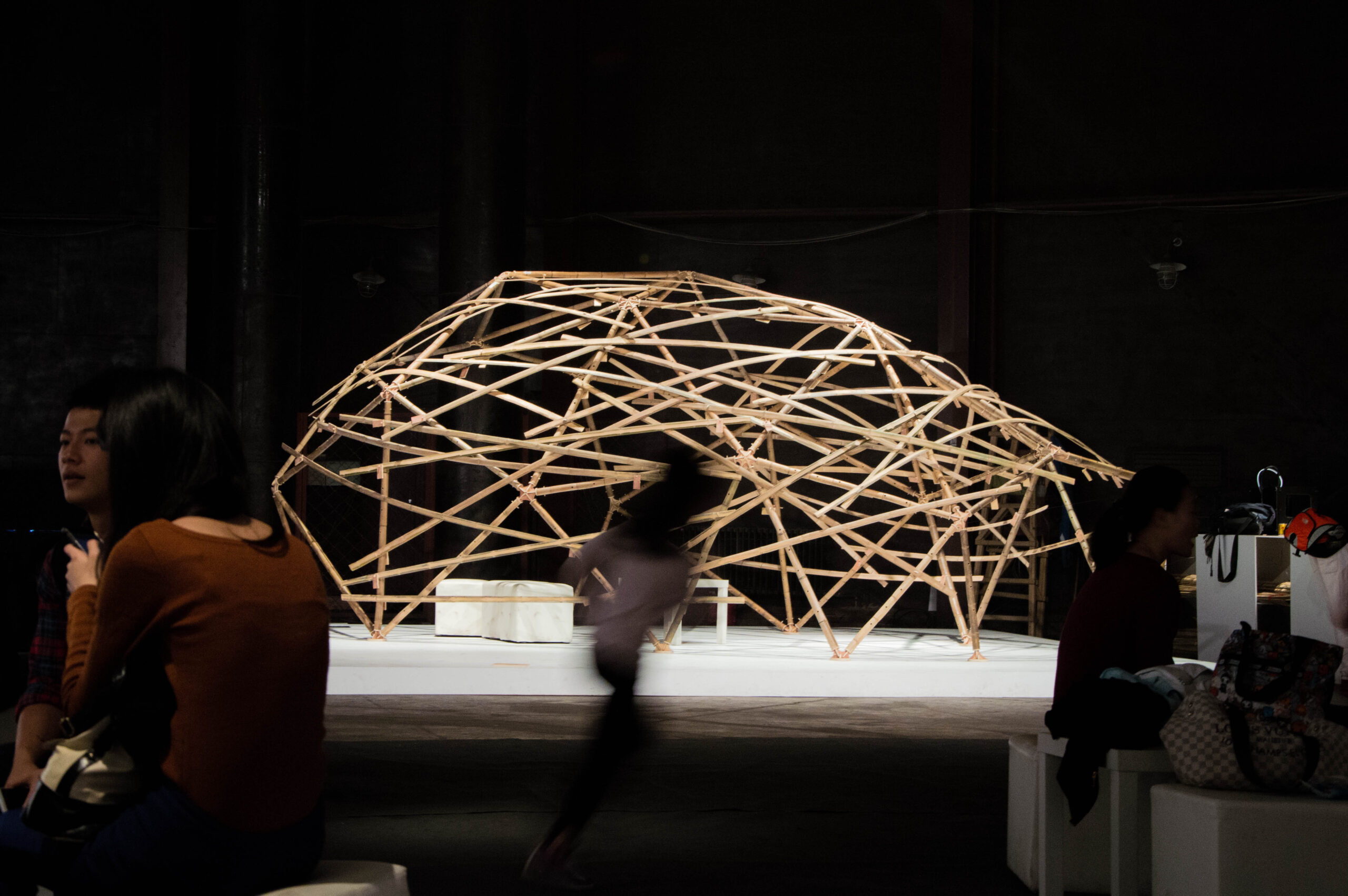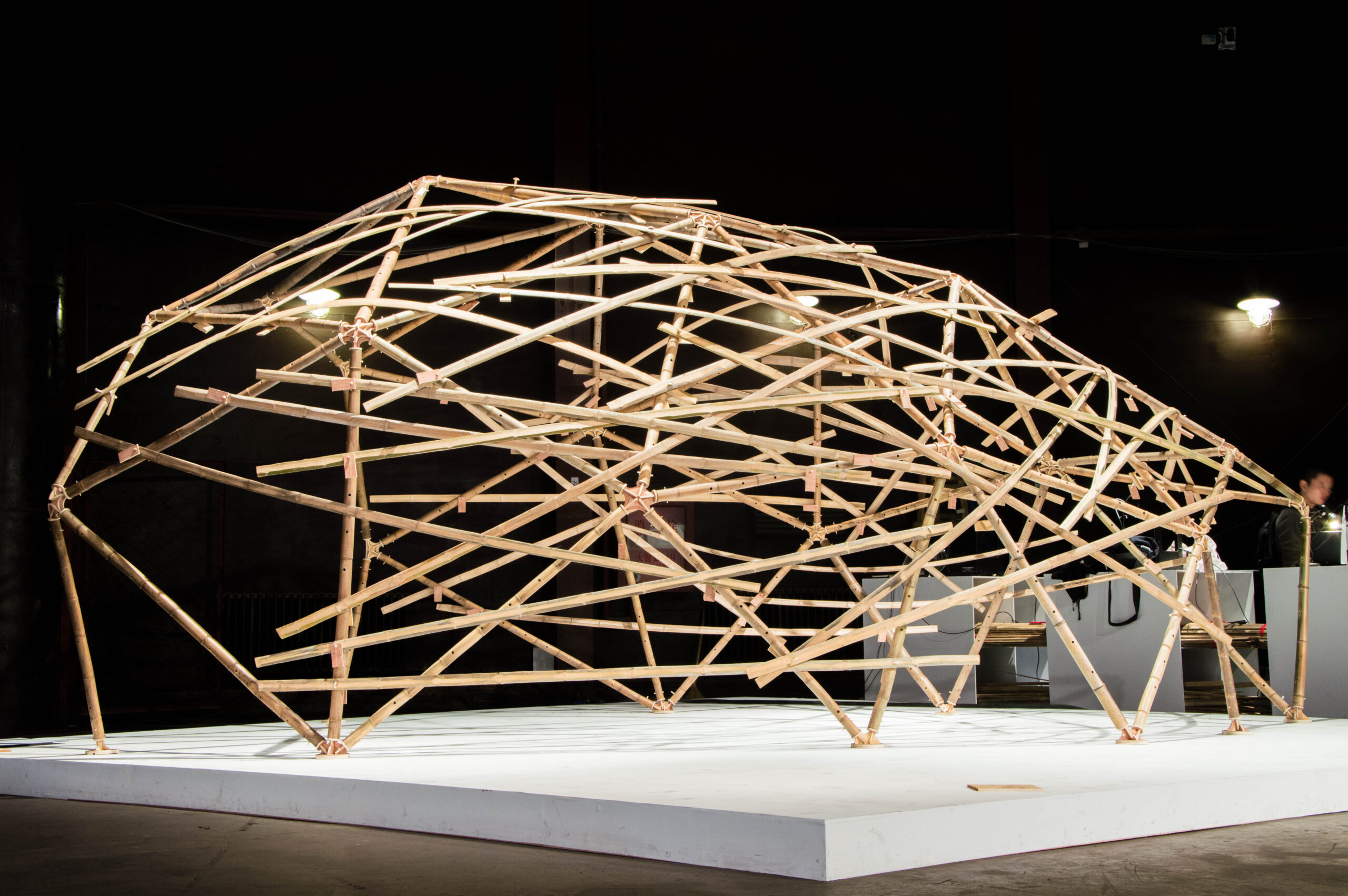OPEN AND PARTICIPATIVE DESIGN
The design phase of the joints was developed through a workshop during the week prior to the Design Week held at the Chinese Academy of Fine Arts with 15 local students, giving the local students the opportunity to be introduced to digital fabrication techniques, as well as new software necessary for this implementation. Through the application of 3D printing and CNC milling, a series of joints designed were elaborated. These designs were then combined and integrated to finally develop a single base joint typology. A press fits joint was developed allowing easy customisation and allowing to overcome the great irregularity in the bamboo beams, differing in size from 40mm to 60mm. For the final structure, 22 different joints were fabricated through the customisation of the original design.
COLLABORATIVE MAKING
During the Design Week, the BB Make structure was constructed thanks to the participation and collaboration of the local visitors, and the dedication of the CAFA students. The structure was composed of a primary structure, implemented with bamboo beans and held together with the 22 customised joints fabricated onsite in the 79 tank. On top of this, in the interest of allowing the local visitors to further personalise the structure, hence fully taking advantage of the perks of digital fabrication, and finally making the structure “theirs”, a secondary structure was implemented using split bamboo beams, where the visitors could CNC mill a personal message, and connect this to the primary structure through simplified joints.
The BB Make installation finally represented the physical implementation of an exchange of knowledge, as well as culture, thanks to the combination of local materials and participation, with technologically advanced fabrication techniques, one of the fields of investigation developed in IAAC. Towards facilitating the access of these digital fabrication techniques during the Design Week, IAAC generated a “pop-up” Fab Lab inside the 79 Tank, among which the user could access and use 3D printers and a CNC milling machine.
The collaborative implementation of the structure allowed people, from students and professionals of the fields of architecture and design to the general public, to have the opportunity to be introduced to new digital fabrication techniques, with the support of trained professionals, as well as having the opportunity of actually realising their designs through these techniques, and finally constructing the BB Make structure throughout the duration of the BJDW2014.










